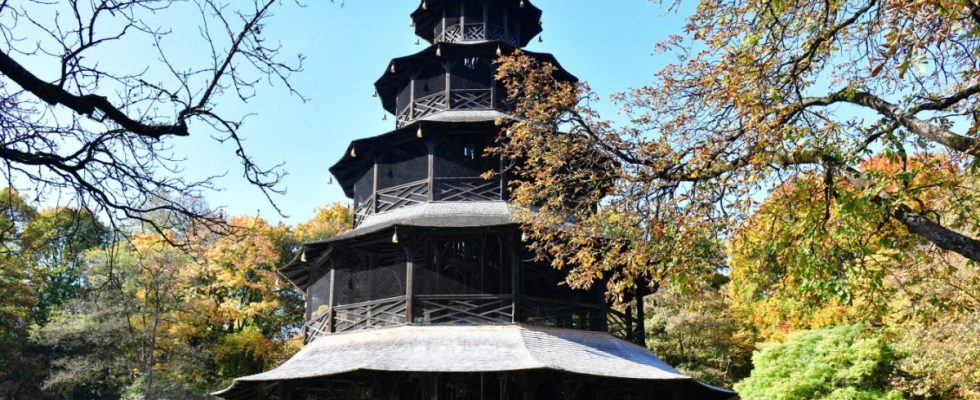Munich’s trees are under stress. You are not alone, because climate change is affecting not only Munich but the whole of Germany through changing rainy and dry seasons. A team of scientists from the Technical University (TU) in Berlin has now examined changes in historical parks. Among other things, they asked themselves: How do hot years affect the plants?
With figures for 62 parks, the researchers say they laid the foundation for later comparisons for the first time – in the form of a data set on climate-related damage to trees in historical gardens. In the Munich area, the scientists examined the Nymphenburg Park, the English Garden, the Hartmannshofer Park, the Lenné Park in Feldafing and the Schleißheim Palace complex. The report on the condition of these facilities was only moderately good.
Norbert Kühn led the two-year research work at the university. Using cadastral data, which the responsible administrations otherwise use to assess the risk of breakage and the health of trees, he and his team analyzed the vitality of trees in eleven federal states. Overall, there are many more historical green spaces in the Federal Republic than just the 62 examined. But the problem was obtaining the necessary information: many administrations did not have the data digitized.
The researchers compiled the cadastral data from 2022 in a database so that they could be compared. The scientists then assessed the condition of the trees in three categories: “Healthy or barely affected”, “slightly to moderately affected” and “severely affected to dead”. A tree is considered damaged if, for example, the tree crown becomes thinner and has fewer leaves or the branches of the crown break off in winter. The reasons for this could be both the climate and the age of the trees, emphasized Kühn.
If the crown of old trees becomes thinner, as here in Nymphenburg Park, their vitality is impaired. The trees shed leaves or entire branches that could no longer be properly supplied due to a lack of water.
(Photo: TU Berlin)

There are already severe disruptions in the Nymphenburg Palace Park.
(Photo: Robert Fishman/imago/ecomedia)
The Munich values differed only slightly from the overall result. While around 59 percent of the trees examined were “slightly to severely damaged” in the Germany-wide comparison in 2022, Nymphenburg Park showed slightly more damage. There, 50 percent of the trees were classified as “slightly to moderately impaired” and 18 percent were “severely impaired to dead”. In the English Garden (59 percent “slightly to moderately impaired”, 14 percent “severely impaired to dead”), in Hartmannshofer Park (58 percent “slightly to moderately impaired”, 13 percent “severely impaired to dead”) and in Lenné Park in Feldafing on Lake Starnberg (52 percent “slightly to moderately impaired,” 12 percent “severely impaired to dead”) the numbers were similar. Only the Schleißheim palace complex performed better. There, 45 percent of the trees were rated as “slightly to moderately impaired” and only seven percent as “severely impaired to dead.”
Inner-city parks often suffer more damage
In the overall evaluation, the Munich parks only achieved midfield. In a comparison of all 62 parks, the Schleissheim Palace complex came in 30th place, the English Garden was in 48th position as the Munich park with the worst condition. “Here you have the problem of many inner-city parks,” says Professor Kühn, classifying this result: “It is often the case that these are particularly heavily frequented. Intensive use always leads to further damage.”
In addition to the current condition of the trees, the researchers also tried to correlate the development of tree health in the parks from 2017 to 2020. The aim was to measure the effects of climate change and hot years on the historic gardens. For this second study, data was available for nine plants throughout Germany, but in the Munich area only for the English Garden. In general, the health of the plants decreased in the nine systems examined between 2017 and 2020, said Kühn. The good news: Despite the droughts of recent years, the English Garden showed only “few changes”.
In view of the results, the scientists recommended that the health status of historical parks throughout Germany be regularly measured in order to track developments. Last but not least, the historic gardens are a cultural heritage that needs to be preserved, said Kühn. This requires intensive care measures and financial support in order to adapt to the changed climatic conditions and to maintain the parks.

